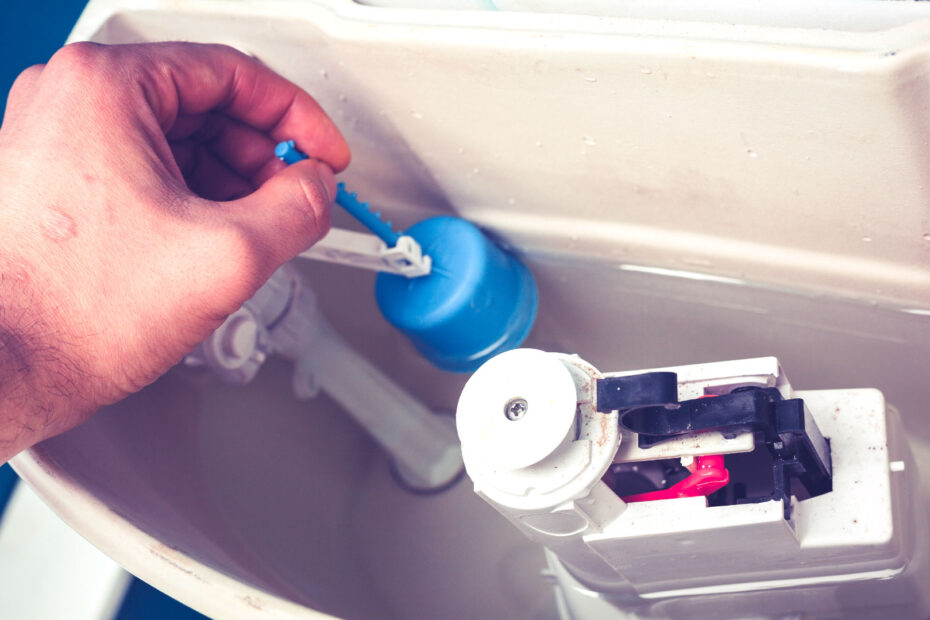A slow-flushing toilet can be more than just a minor inconvenience; it may be a sign of underlying plumbing issues that require immediate attention. Understanding the root causes of a sluggish flush can help you address the problem effectively and prevent potential water damage or costly repairs in the future,
Understanding How a Toilet Works
Before diving into the causes and solutions, it’s essential to understand the basic mechanics of a toilet:
- The Tank: Stores water used for flushing.
- The Bowl: Receives waste and water from the tank.
- The Flapper Valve: Controls the release of water from the tank to the bowl.
- The Trap: A curved channel inside the base of the toilet that holds water and prevents sewer gases from entering your home.
- Rim Jets: Small holes under the rim of the toilet bowl that release water during a flush to rinse the bowl.
When you press the flush handle, the flapper valve lifts, allowing water to flow from the tank into the bowl. This surge of water pushes waste through the trap and into the drain line.
Common Causes of a Slow-Flushing Toilet
1. Clogged Toilet Trap
The toilet trap is prone to clogs due to excessive toilet paper, sanitary products, or foreign objects. A partial blockage slows down the flow of water and waste, resulting in a weak flush.
2. Blocked Plumbing Vents
Plumbing vents allow air to enter the drainage system, preventing a vacuum that could hinder water flow. A blocked vent can cause slow draining and gurgling noises.
3. Partial Blockage in the Drain Line
Over time, drain lines can accumulate debris, leading to partial blockages that restrict water flow and cause slow flushing.
4. Low Water Level in the Tank
If the tank doesn’t fill to the appropriate level, there won’t be enough water to generate a strong flush.
5. Flapper Valve Issues
A worn-out or misaligned flapper valve may not open fully, limiting the amount of water released during a flush.
6. Mineral Build-Up
Hard water can cause mineral deposits to accumulate in the rim jets and siphon hole, reducing water flow into the bowl.
7. Problems with the Rim Jets
Clogged or dirty rim jets prevent water from entering the bowl efficiently, leading to a sluggish flush.
8. Sewer Line Issues
Serious blockages or damage in the main sewer line can affect toilet flushing performance throughout the home.
9. Issues with the Flush Handle or Chain
A loose or broken flush handle or chain can prevent the flapper valve from lifting fully, resulting in an incomplete flush.
How to Diagnose the Problem
- Check the Water Level: Remove the tank lid and observe the water level. It should be about an inch below the overflow tube.
- Inspect the Flapper Valve: Flush the toilet and watch the flapper valve. Ensure it lifts completely and stays open until most of the water has left the tank.
- Examine the Rim Jets: Use a mirror to look under the rim for mineral deposits or blockages.
- Test the Flush Handle and Chain: Make sure the handle isn’t loose and the chain has the correct slack.
- Listen for Gurgling Sounds: Gurgling during flushing may indicate venting issues.
- Perform a Drain Line Test: Flush the toilet and observe the speed at which the water drains. Slow draining may point to a blockage.
Solutions to Fix a Slow-Flushing Toilet
DIY Solutions
Unclog the Toilet Trap
- Plunger Method: Use a flange plunger to create a seal and apply forceful plunges to dislodge the blockage.
- Auger Method: Insert a toilet auger into the bowl to break up or retrieve the clog.
Clean the Rim Jets and Siphon Hole
- Vinegar Soak: Pour white vinegar into the overflow tube to dissolve mineral deposits overnight.
- Scrubbing: Use a wire brush to manually remove build-up from the rim jets.
Adjust the Water Level
- Float Adjustment: Modify the float mechanism to allow more water into the tank.
- Fill Valve Inspection: Ensure the fill valve is functioning correctly and replace if necessary.
Fix the Flapper Valve
- Alignment: Realign the flapper to ensure a proper seal.
- Replacement: Install a new flapper if it’s worn or damaged.
Repair the Flush Handle and Chain
- Tighten Handle: Secure any loose components.
- Adjust Chain Length: Ensure there’s about half an inch of slack in the chain.
When to Call a Professional Plumber
- Blocked Plumbing Vents: Requires roof access and specialized tools.
- Sewer Line Issues: Indicated by multiple slow drains and sewage odors.
- Persistent Drain Line Blockages: If DIY methods fail to clear the clog.
Preventative Measures
- Mind What You Flush: Only flush toilet paper and human waste.
- Regular Cleaning: Keep rim jets and the bowl clean to prevent mineral build-up.
- Routine Inspections: Periodically check tank components for wear and tear.
- Install a Water Softener: Reduces mineral deposits in areas with hard water.
Conclusion
A slow-flushing toilet can stem from various issues, ranging from simple clogs to more complex plumbing problems. By understanding the potential causes and implementing appropriate solutions, you can restore your toilet’s efficiency and prevent future complications. Regular maintenance and mindful usage are key to ensuring a smoothly operating toilet system.
